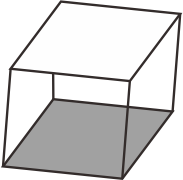Smart Math Formulas:
Algebra Formulas
Algebra Formulas
- Algebra Formulas - New !!
- Math Formula Basic | Polygon
- Math Formula Bsic | Circle
- Math Formula Basic | Rhombus
- Math Formula Basic | Square
- Math Formula Basic | Triangle
- Math Formula Basic | Kite
- Math Formula Basic | Rectangle
- Math Formula Basic | Trapezium
- Geometry Formulas - New !!
- Math Formulas - New !!
- Math Formulas | Complex numbers - New !!
- Math Formulas | Set Identities - New !!
- Math Formulas | Sets of Numbers - New !!
- Math Formulas | Cuboid Or Rectangular Prism - New !!
- Math Formulas | Triangular Prism - New !!
- Math Formulas | Square Prism Or Square Cuboid - New !!
- Math Formulas | Hexagonal Pyramid
- Math Formulas | Pentagonal Pyramid - New !!
- Math Formulas | Cone
- Math Formulas | Cylinder
- Math Formulas | Rectangular box (Beams)
- Math Formulas | Volum Of Cube









